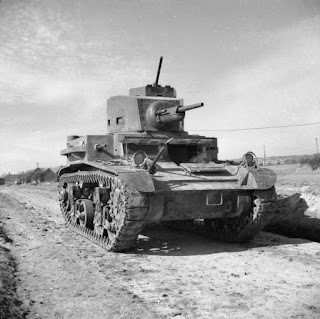To fully appreciate this entry you first will need to travel to You Tube and
watch a preserved clip of a broadcast by Keith Olbermann in which he dresses down Bill O’Reilly for his attributing the events of the Malmedy Massacre to the United States Army, rather then to the German SS. Overall the commentary of both men has aspects that are correct, Keith Olbermann is correct in asserting that Bill O’Reilly is wrong in attributing the events of the Malmedy Massacre to the armed forces of the United States, captured American soldiers were executed in a field near where they were taken prisoners by members of the German SS. The SS, speaking broadly, was a military organization that was semi-separated from the regular German Army, the Wehrmacht, the SS had its own chain of command, supply systems, rules of engagement, military culture and organization, and was treated effectively as an “army within an army.” The reason though they can only be considered as a semi-separate part of the Wehrmacht is that the SS did work in military operations in cooperation with the Wehrmacht and the two military commands were expected to operate together towards overall tactical and strategic goals.
This is important to understand because the policies of the SS reflect an extreme dimension of policies followed and often supported by the leadership of the Wehrmacht, especially on the Eastern Front. That fact is important because Bill O’Reilly is also correct, there is solid evidence that the armed forces of the United States did execute some German prisoners taken in battle, some after the events of Malmedy in retaliation and also some German prisoners of war taken in earlier battles. In the airborne landings prior to the Normandy amphibious landings (popularly referred to as D-Day) in the early hours of 6 June 1944 the deployed airborne units were widely scattered, disorganized, and lacked the capacity or facilities to handle German’s taken prisoner. Some soldiers did execute German prisoners of war, a sad fact but one well documented by testimony on both sides of the battle lines. Furthermore during the Normandy landings some German’s who attempted to surrender were executed by American forces, either immediately following the conclusion of the battle or shortly after the battle. So Bill O’Reilly is correct, American armed forces did engage in actions that could be seen as atrocities against German prisoners of war. What both commentators miss though is the broader context of the situation and, in that, lies the real key critical aspect of these events and why Bill O’Reilly’s comments represent a horrible twisting of history.
Massacres of German prisoners of war, conducted by American forces in the Normandy campaign, and earlier in the Italian campaign of 1943, were actions of individual units of soldiers. The highest levels of command authorizing such actions, to my knowledge, were commanders in the front lines of individual units, no order of that nature came from the central leadership of the United States armed forces or from any political leadership of any Allied power. To put it more simply, Eisenhower, Roosevelt, and Churchill never issued any orders following the events of Malmedy to kill German prisoners of war. However in Germany, on the Eastern Front, the situation was quite different – Russian prisoners of war were executed in vast numbers, through forced labor, starvation, and direct violence upon prisoners taken on the Eastern Front. This savage policy was an extension of Germany’s policies regarding “racial purity” and the overall plan of the Nazi leadership to destroy the various Slavic ethnic/linguistic populations in Eastern Europe to replace them with ethnic German settlers. Slaughtering Russian prisoners of war, in brutal and calculated fashion, was the official policy of the high command of the German SS, it was a policy followed and often supported by the command of the German Wehrmacht, and it was a policy endorsed and orchestrated by the highest levels of command in the Nazi government of Germany.
In other words – evidence indicates solidly that Adolph Hitler was the central figure behind a systematic policy of execution of any Russian prisoners of war taken from 1941 onwards and that he was supported in this policy at most, if not all levels, of the command structure of his military forces and the government of Germany.
So why does this link to the events on the Western front in which American prisoners of war were killed by a German SS unit? It matters because the massacre of the American prisoners of war is an extension of a Nazi policy of war on the Eastern Front, meaning that this massacre was undertaken in a military environment far different then that facing American military personnel. It was unacceptable to the higher levels of command in the United States armed forces that German prisoners of war would be executed if taken in battle, it was a breech of the rules of engagement and punishable. For the SS units going into battle in 1944, it was not an unacceptable policy and might have even been ordered by the Nazi high command. Bill O’Reilly and Keith Olbermann miss the broader impact of the Malmedy massacre and the executions of German prisoners of war that occurred at the hands of American soldiers, when German prisoners of war were shot by Americans it was an action by an individual unit acting on its own, in violation of the rules of engagement and standing orders. When German military figures executed American prisoners of war in a field in Belgium, it was an extension of a policy in operation, with official blessing, in how the German military conducted its wars from 1941 onwards. One is a single incident that is a regrettable human failing, the other a systematic policy of slaughter and brutalization with the aim of spreading terror among ones opponents and, more darkly, destroying an entire ethnic and cultural group.

































